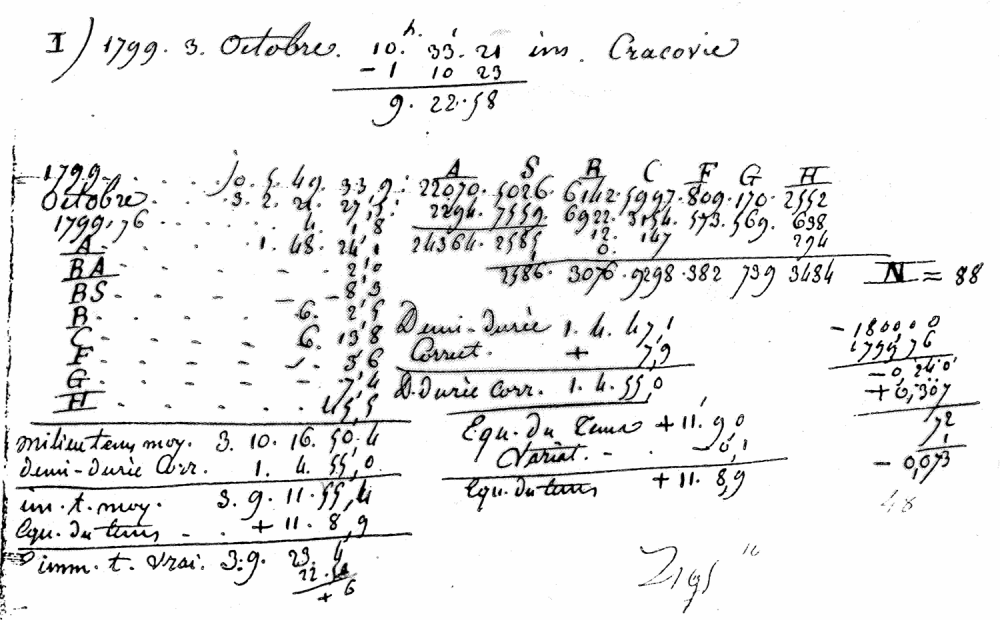History of astronomy
Introduction
The work of the Pegase team spanned several years and even several decades. The development of a precise modeling of the motion in a system of satellites, such as for example the Galilean satellites, requires to know well all the physical phenomena which intervene in this motion. Many studies are therefore necessary. Moreover, the validation of the models requires having a large number of observations distributed over a time interval as long as possible so as to discriminate the secular terms and the periodic terms. It is therefore necessary to go back in time to understand how the observations were made and how they can be used or improved. This led researchers of the Pegase team to make researches into the processes developed over time.
All these works made to improve our knowledge of the solar system serve in particular to publish the ephemerides of these bodies. These ephemerides have been published since 1679 in the Connaissance des temps which is more than a publication of only ephemerides, it is also a scientific journal reporting on the progress of science. We have published articles intended to help the reading and understanding of the scientific articles of the Connaissance des temps.
An history of Connaissance des temps
This project began in 2012: a request to digitize the volumes of "Connaissance des temps" (CDT) and the Annuaire du Bureau des longitudes" was carried by J.E. Arlot, J.L. Simon and M. Bugnon-Olano. An agreement between the BNF and the Paris Observatory enabled this digitization. The aim was to make rare works that only exist in a few hard-to-access libraries available to everyone. From there, several actions were carried out.
- an indexation of all the volumes in order to find easily articles on a specific topic (in progress)
- the making of a web site presenting the different topics published in CDT: https://cdt.imcce.fr
- the writing of a paper on the history of CDT (in progress)
- the writing of small articles for the Newsletter of IMCCE in order to help general public in the reading of CDT: "La Connaissance des temps: un journal scientifique publié depuis 1679" (in french).

The evolution of the accuracy of the astrometric observations of the Galilean satellites
This study aims to show how the accuracy of astrometric observations of the Galilean satellites of Jupiter has evolved from the first observations by Galileo until today. We can see how this accuracy is mainly based on the technological evolution of the instrumentation used but is prompted by the need to validate theoretical models and to increase our knowledge about these bodies.
References
2019, Arlot J.E., Journal of Astronomical History and Heritage, volume 22, pages 78-92.
Last update Saturday 01 May 2021